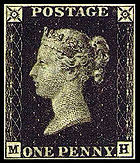
Rose engine lathe
Encyclopedia

Geometric lathe
A geometric lathe was used for making ornamental patterns on the plates used in printing bank notes and postage stamps. It is sometimes called a Guilloché lathe. It was developed early in the nineteenth century when efforts were introduced to combat forgery, and is an adaptation of an ornamental...
. The headstock rocks back and forth with a rocking motion or along the spindle axis in a pumping motion, controlled by a rubber moving against a rosette or cam-like pattern mounted on the spindle, while the lathe spindle rotates. Rose engine work can make flower patterns, as well as convoluted, symmetrical, multi-lobed organic patterns. The patterns it produces are similar to that of a Spirograph
Spirograph
Spirograph is a geometric drawing toy that produces mathematical curves of the variety technically known as hypotrochoids and epitrochoids. The term has also been used to describe a variety of software applications that display similar curves, and applied to the class of curves that can be produced...
, in metal. No other ornamental lathe can produce these "rose" patterns.
Engine work is easier than a high-gloss finish, especially in recessed areas, and is often found inside the casing of expensive watches. It sometimes confused with "jewel finishes," a much cheaper process of making swirly marks in metal made by attaching an abrasive pad to a power drill. Jewel finishes used to be common on stereo faceplates and automobile interiors.
The rose engine was invented by Jacob Perkins
Jacob Perkins
Jacob Perkins was an Anglo-American inventor, mechanical engineer and physicist. Born in Newburyport, Massachusetts, Perkins was apprenticed to a goldsmith...
, co-founder of the printing firm of Perkins, Bacon & Petch (PB&P). This firm was awarded the contract for printing the United Kingdom's first postage stamps (known as the "line engraved" series), including the Penny Black
Penny Black
The Penny Black was the world's first adhesive postage stamp used in a public postal system. It was issued in Britain on 1 May 1840, for official use from 6 May of that year....
of 1840. The die used to prepare the printing plates was partially created by means of the rose engine, which produced a complicated pattern on a separate piece of metal. Rollers were then used to transfer this pattern to the die, where it formed the background and border patterns (the head, corner decoration and lettering were hand-engraved). This pattern made the stamps difficult to forge, and PB&P (known from 1852 as Perkins, Bacon & Co.) held the contract for forty years, during which time the designs of the stamps which they printed changed little.

